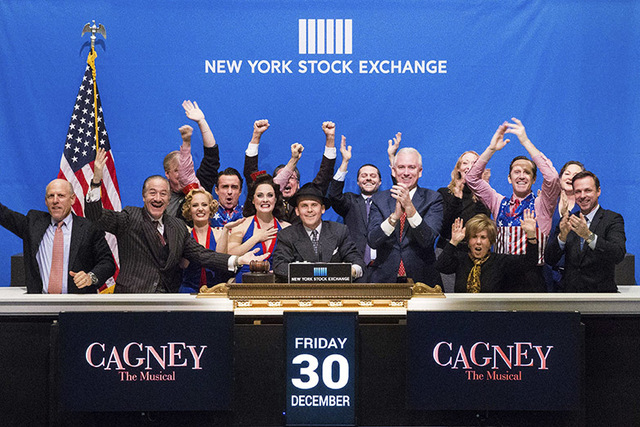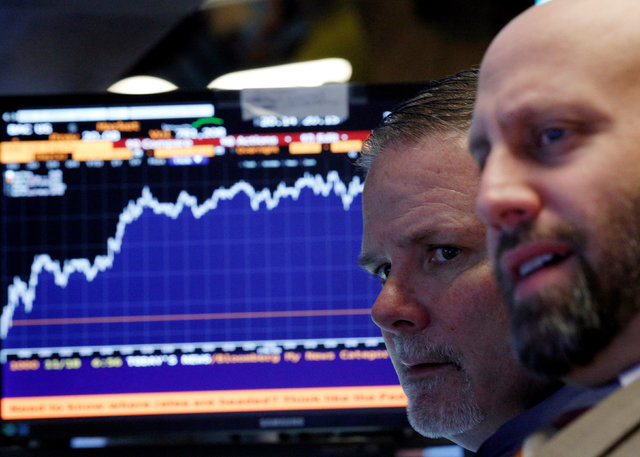US stocks score big gains for the year, despite early stumble
In a year with no shortage of surprises and stomach-churning turns in the market, stock investors can feel pretty good about 2016.
Wall Street repeatedly bounced back from steep slumps, including the worst start to any year for stocks, the second correction for the market in five months and investor fears of a global slowdown. It also weathered plummeting oil prices and the surprising outcomes of Britain’s vote to leave the European Union and Donald Trump’s U.S. presidential election win.
A turnaround in company earnings growth, more stable oil prices, a steadily improving U.S. economy and job market all helped keep the market on an upward trajectory. More recently, investor optimism that the Republican election sweep will usher in a bevy of business-friendly policies spurred the market to new heights.
“It’s been the year of the unlikely happening, but the crazy thing about the unlikely happening is you would expect that to lead to big sell-offs, and we experienced the exact opposite,” said J.J. Kinahan, TD Ameritrade’s chief strategist. “The more things happened that were unlikely, the more we seemed to rally.”
On Friday, the Standard & Poor’s 500 index, the broadest measure of the stock market, fell 10.43 points, or 0.5 percent, to 2,238.83. Still, for the year, it gained 9.5 percent after an essentially flat finish in 2015. Including dividends, the total return was 11.96 percent. That means if you invested $1,000 in an S&P 500 index fund at the beginning of the year you’d wind up with $1,134 at the end of the year.
Other major market indexes also posted solid gains. The Dow Jones industrial average flirted with crossing the 20,000 mark and ended the year with a 13.4 percent gain. The Nasdaq composite gained 7.5 percent.
EARLY CORRECTION
Few anticipated the kinds of gains for U.S. stocks this year in January, when the market kicked of the year in a deep slump that knocked the Dow, Nasdaq and S&P 500 into a correction, or a drop of 10 percent or more from their recent peaks.
Fear that an economic slump in China could spark a global economic slowdown and alarm as the price of crude oil fell below $30 a barrel to its lowest level in 12 years triggered the market slide. Weak U.S. economic data didn’t help.
But by the end of March, the market had started to regain its footing. By April, it recouped its losses and continued to mostly head higher. Then, toward the end of June, investors got blindsided by Brexit — Britain’s vote to to leave the European Union. That dragged the market sharply lower and sent investors piling into U.S. bonds.
The slide lasted only a couple of days, and once again the market headed mostly higher.
Throughout the summer and into early fall, stocks rode an encouraging wave of developments: The U.S. job market continued to post strong monthly gains. Consumer confidence strengthened. More companies began to report better earnings and revenue for the third quarter. And crude oil prices stabilized, holding above $50 a barrel.
The market jitters returned as the race between Trump and Hillary Clinton began to tighten, leading to a nine-day slump for stocks ahead of Election Day.
Wall Street had largely seen Clinton as more likely to maintain the status quo, while viewing Trump’s polices as less clear. The billionaire’s surprise win initially set off a sharp sell-off in Asian markets, signaling more pain for U.S. investors. But the opposite happened.
Global financial markets soon steadied and U.S. stocks kicked off a rally that extended well into December, driving the major U.S. stock indexes to record highs.
Investors are now betting that Trump and a Republican-controlled Congress will have a clear pathway to boost infrastructure spending, cut taxes and relax regulations that affect energy, finance and other businesses.
FLIPPED PRIORITIES
That agenda has flipped investors’ priorities since the election away from defensive assets like bonds, utilities and phone companies, which traders had favored for much of this year, to financial, industrial and small-cap stocks.
The move away from bonds, utilities and other safe-play assets is likely to continue as long as investors believe that Trump’s economic policies will lead to economic growth and usher in higher interest rates.
“The investment landscape has changed due largely to the election,” said Terry Sandven, chief equity strategist at U.S. Bank Wealth Management. “We’re set up for equities.”
Even with the gains this year, market strategists say the current bull market, now in its seventh year, should continue, as long as company earnings continue to improve.
“As you look at 2017, the market is not cheap, so earnings have to grow, and they should grow,” said David Chalupnik, head of equities for Nuveen Asset Management. “We have a year and a half to two years of the bull market left.”






























